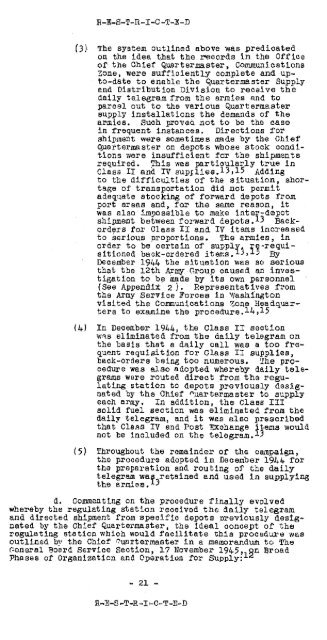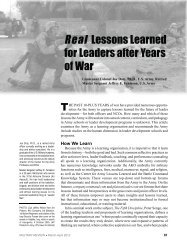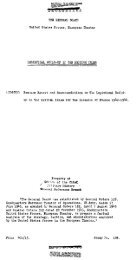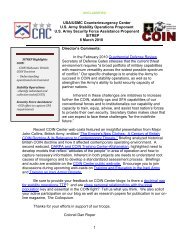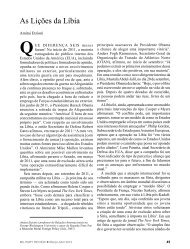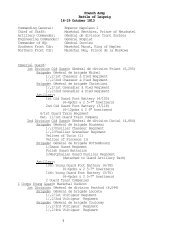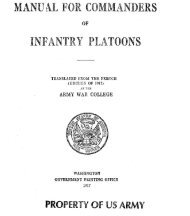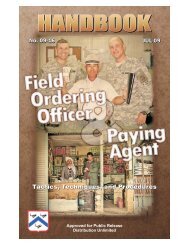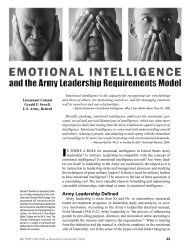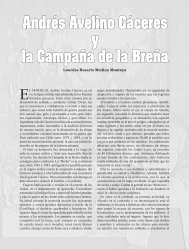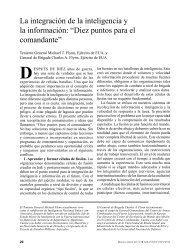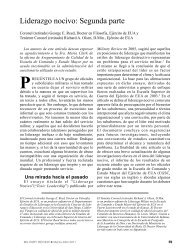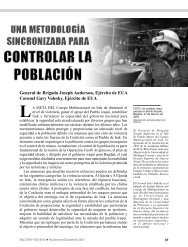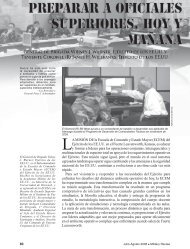Quartermaster Supply Operations - US Army Combined Arms Center ...
Quartermaster Supply Operations - US Army Combined Arms Center ...
Quartermaster Supply Operations - US Army Combined Arms Center ...
Create successful ePaper yourself
Turn your PDF publications into a flip-book with our unique Google optimized e-Paper software.
R-E-S-T-I7 -I-C -T-IC -D<br />
The system outlined above was predicated<br />
on the Idea that the records in the OPfice<br />
of the Chief Qusrtermaster, Comrounj cations<br />
Zone, were sufficiently complete and upto-date<br />
to enable the <strong>Quartermaster</strong> <strong>Supply</strong><br />
end Distribution Division to rscaive the<br />
daily telegram from the armies and to<br />
parcel out to the various <strong>Quartermaster</strong><br />
supply Installations the demands of the<br />
armies. Such provea not to be the case<br />
in frequent instances. Directions for<br />
shipnent were sometines made by the Chief<br />
<strong>Quartermaster</strong> on depots whose stock condl-<br />
tions were insufficient for the shipAents<br />
required. This was partioularly true in<br />
Class I1 and IV sup~lies.l3,15 Adding<br />
to the difficulties of the situation, shor-<br />
tage of transportation did not permit<br />
adequate stocking of forward depots from<br />
port ar8as and, for the same reason, it<br />
was also lmoossible to make inter-depot<br />
shipment beeween forward depota .I3 Backorders<br />
for Class I1 and IT items increased<br />
to serious oroportions. The armies, in<br />
order to be certain of suppl -requisitioned<br />
back-ordered itms.Y3,3f By<br />
December 194b the situation was so serious<br />
that the 12th <strong>Army</strong> Croup caused an investigation<br />
tc be made by Its own personnel<br />
(See Appendix 2). Representatives from<br />
the <strong>Army</strong> Service Forces in 'Vashington<br />
visited the Comunications 'Cone Headquarters<br />
to examine tho procedure.l4,15<br />
In December 1944, the Class 11 section<br />
wqs eliminated from the dally telegram on<br />
the basis that a daily call was a too Prequent<br />
requisition for Class I1 supplies,<br />
back-orders being too numerous. The prpcedure<br />
was also adopted whereby daily talsgrams<br />
wore routed direct Prom the rogulating<br />
station to depots previously desig-<br />
nated by the Chief nuartarmaster 30 supply<br />
each army. In addition, the Class I11<br />
solid fuel section was eliminated from the<br />
daily telegram, and it we8 also prescribed<br />
that Cl8,ss IV end Post =change tens would<br />
not be included on the telcgmm.:3<br />
Throughout the remainder of the campaiqn,<br />
the prooedure adopted in December 19l+,4for<br />
the preparation and routinpl of the dailv<br />
telegrai wagyetained anti isad in supplying<br />
the armies.<br />
d. Commmting on the procedure finally evolved<br />
whereby the regulating station reoeivsd the daily telegram<br />
and directed shipment from spec3.f ic depots oreviously deslgnated<br />
by the Chief <strong>Quartermaster</strong>, the ideal ooncept of the<br />
regulating station which would facilitate this procedure was<br />
outlined b>v the Chief "unrternsster in a memorar?dum to The<br />
Penrsal i3oerd Ssrvice Section, 17 November 1945!1p Rroa&<br />
Phases of Organization and Cperation for <strong>Supply</strong>.<br />
- 21 -<br />
R-E-8 -T-P.-I-C-T-E-D


